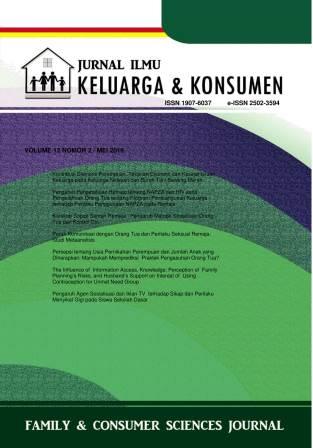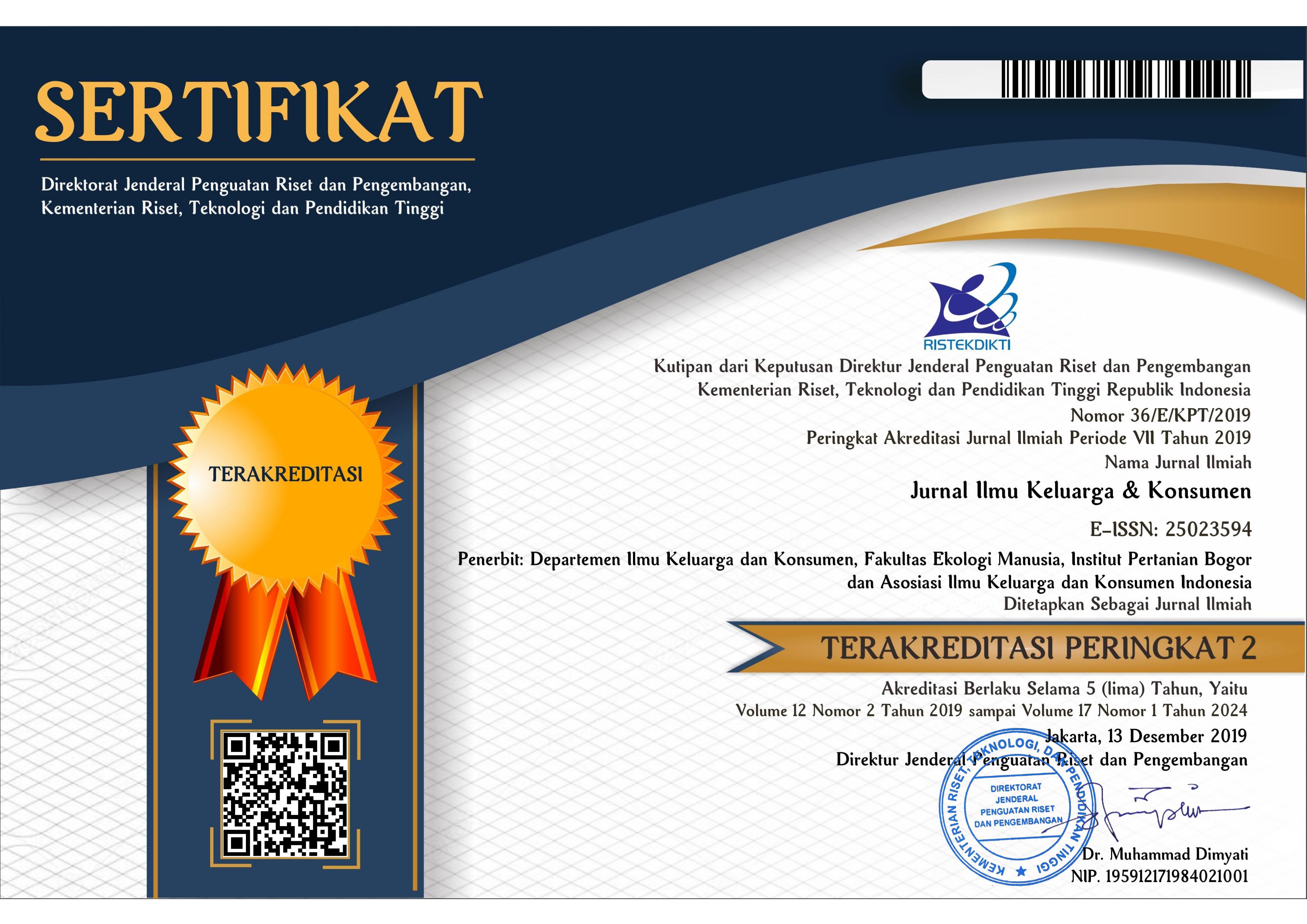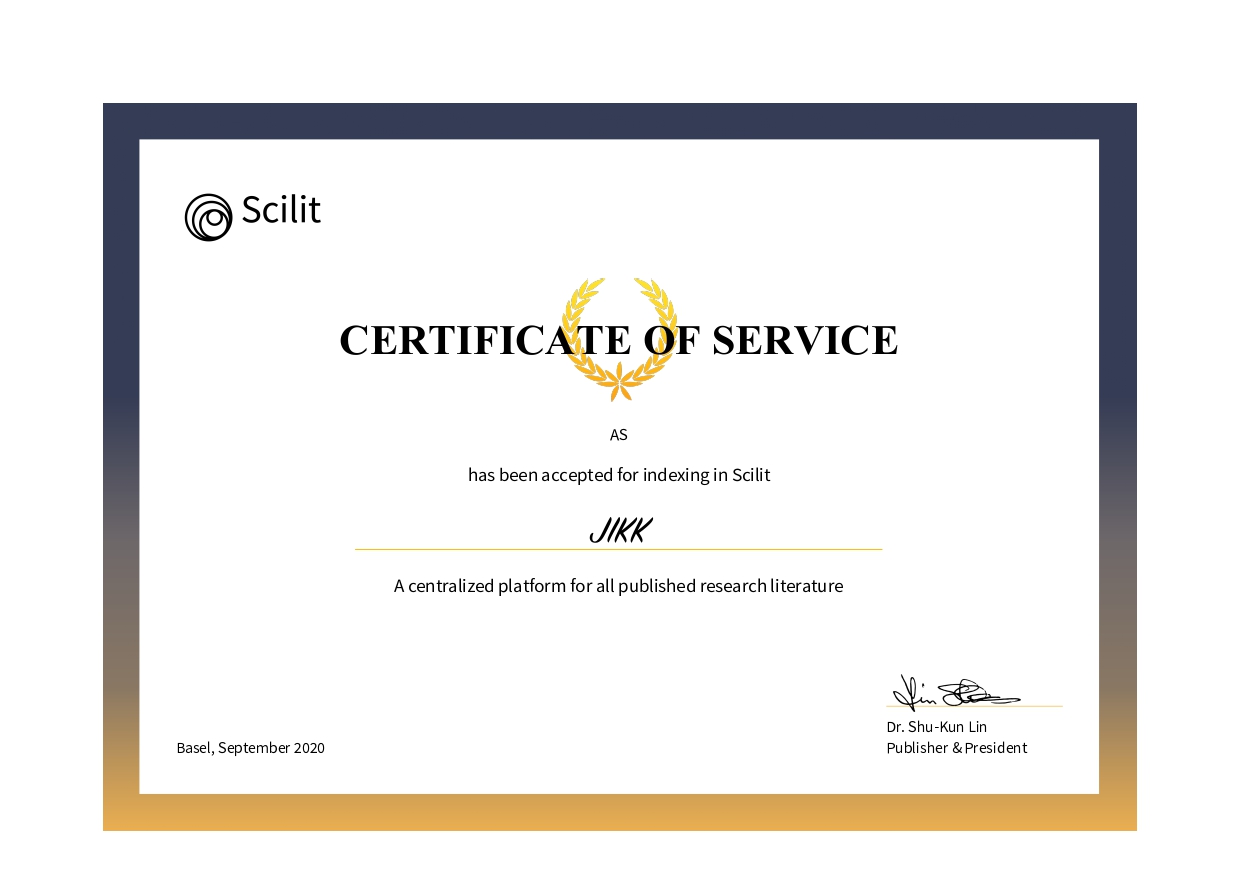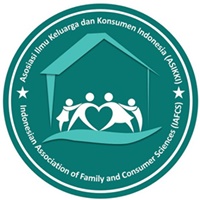Peran Komunikasi dengan Orang Tua dan Perilaku Seksual Remaja: Studi Metaanalisis
Abstract
Previous research on parent-adolescent communication and adolescent sexual behavior showed some inconsistent results. A meta-analysis was performed for the purpose of determining the magnitude of association between parent-adolescent communication and adolescent’s sexual behavior. Adolescent’s sexual behavior encapsulates knowledge about sexual and reproductive health (healthy sexual behavior, reproductive health and risky sexual behavior), attitude on sexuality, intention and sexual behavior (dating, intercourse and pregnancy), self efficacy and sel control in abstinence and condom use. This study is conducted by analysis of scientific articles from EBSCO, ProQuest, Science Direct, Taylor & Francis, Willey, and Sage Publication. The study selected studies published from 2001-2015 that were written in English. The participants of the studies had age ranged from 10-24 years, based on WHO definition of young people. Based on inclusion criteria, the initial searched yielded 121 articles, 20 articles with 55 studies of which were eligible. The results of the meta-analysis showed that parent-adolescent communication determined adolescent sexual behavior (r=0,08). Meanwhile, communication has more significant influence on adolescent’s sexual behavior based on parent perceived (r=0,62) compared with perceived by adolescents (0,43) or adolescents-parents (0,48). Future studies based on the limitations are needed for further understanding the effect of parent-adolescent communication in term of sexuality regarding on culture and gender differences.
References
Aarø, L. E., Flisher, A. J., Kaaya, S., Onya, H., Fuglesang, M., Klepp, K.-I., & Schaalma, H. (2006). Promoting sexual and reproductive health in early adolescence in South Africa and Tanzania: development of a theory- and evidence-based intervention programme. Scandinavian Journal of Public Health, 34(2), 150–8. https://doi.org/10.1080/14034940510032356
Alleyne-Green, B., Coleman-Cowger, V. H., & Henry, D. B. (2012). Dating violence perpetration and/or victimization and associated sexual risk behaviors among a sample of inner-city African American and Hispanic adolescent females. Journal of Interpersonal Violence, 27(8), 1457–73. https://doi.org/10.1177/0886260511425788
Aung, N. (2011). Parent-Teen Communication and Adolescent Sexual Behavior in Hawai. University of Hawai’i at Manoa.
Ayalew, M., Mengistie, B., & Semahegn, A. (2014). Adolescent-parent communication on sexual and reproductive health issues among high school students in Dire Dawa, Eastern Ethiopia: a cross sectional study. Reproductive Health, 11(1), 77. https://doi.org/10.1186/1742-4755-11-77
Barker, V. E., Abrams, J. R., Tiyaamornwong, V., Seibold, D. R., Duggan, A., Park, H. S., & Sebastian, M. (2000). New contexts for relational communication in groups. Small Group Research, 31(4), 470–503. https://doi.org/10.1177/104649640003100405
Barman-Adhikari, A., Cederbaum, J., Sathoff, C., & Toro, R. (2014). Direct and indirect effects of maternal and peer influences on sexual intention among urban African American adn Hispanic Females. Child and Adolescent Social Work Journal, 31(6), 559–575. https://doi.org/10.1007/s10560-014-0338-4
Bouris, A. M. (2009). Parental Influences on Adolescent and Young Adult Sexual Behavior and Outcomes : Findings from National Longitudinal Study of Adolescent Health. Columbia University.
Brooks, F. M., Magnusson, J., Spencer, N., & Morgan, a. (2012). Adolescent multiple risk behaviour: an asset approach to the role of family, school and community. Journal of Public Health (Oxford, England), 34 Suppl 1, i48-56. https://doi.org/10.1093/pubmed/fds001
D.Visker, J. (2009). The Relationship Between Sexuality-Based Parent-Adolescent Communication and Overall Sexual Health Among Selected University Students. Southern Illinois University Carbondale.
Dimbuene, Z. T., & Defo, B. K. (2011). Risky sexual behaviour among unmarried young people in cameroon : another look at family environment. Journal of Biosocial Science, 43(2), 129–153. https://doi.org/10.1017/S0021932010000635
Dittus, P., Miller, K. S., Kotchick, B. A., & Forehand, R. (2004). Why parents matter!: the conceptual basis for a community-based HIV prevention program for the parents of African American youth. Journal of Child and Family Studies, 13(1), 5–20. https://doi.org/10.1023/B:JCFS.0000010487.46007.08
Dutra, R., Miller, K. S., & Forehand, R. (1999). The process and content of sexual communication with adolescents in two-parent families: associations with sexual risk-taking behavior. AIDS and Behavior, 3(1), 59–66. https://doi.org/10.1023/A:1025419519668
Gaioso, V. P. (2013). Relationsehip Between Latino Parental, Adolescent and Cultural Variables on Adolescent’s Attitudes, Norms, Self Efficacy ans Sexual Intentions. The University of Alabama.
Guilamo-Ramos, V. (2010). Dominican and Puerto Rican mother-adolescent communication: maternal self-disclosure and youth risk intentions. Hispanic Journal of Behavioral Sciences, 32(2), 197–215. https://doi.org/10.1177/0739986310361594
Hadley, W., Brown, L. K., Lescano, C. M., Kell, H., Spalding, K., Diclemente, R., & Donenberg, G. (2009). Parent-adolescent sexual communication: Associations of condom use with condom discussions. AIDS and Behavior, 13(5), 997–1004. https://doi.org/10.1007/s10461-008-9468-z
Hale, D. R., Fitzgerald-Yau, N., & Viner, R. M. (2014). A systematic review of effective interventions for reducing multiple health risk behaviors in adolescence. American Journal of Public Health, 104(5), e19-41. https://doi.org/10.2105/AJPH.2014.301874
Haley, T., Puskar, K., Terhorst, L., Terry, M. A., & Charron-Prochownik, D. (2013). Condom use among sexually active rural high school adolescents personal, environmental, and behavioral predictors. The Journal of School Nursing : The Official Publication of the National Association of School Nurses, 29(3), 212–24. https://doi.org/10.1177/1059840512461282
Harden, K. P. (2014). A sex-positive framework for research on adolescent sexuality. Perspectives on Psychological Science, 9(5), 455–469. https://doi.org/10.1177/1745691614535934
Harris, L. W., & Cheney, M. K. (2015). Positive Youth Development Interventions Impacting the Sexual Health of Young Minority Adolescents: A Systematic Review. The Journal of Early Adolescence, 1–44. https://doi.org/10.1177/0272431615578693
Huang, D. Y. C., Murphy, D. a, & Hser, Y.-I. (2011). Parental monitoring during early adolescence sexual initiation: discrete-time survival mixture analysis. Journal of Child and Family Studies, 20(4), 511–520. https://doi.org/10.1007/s10826-010-9418-z
Hunter, J. E., & Schmidt, F. L. (2004). Methods of meta-analysis - Correcting error and bias in research findings. Sage (2nd Editio). Thousands Oaks, California: SAGE Publications Ltd.
Iyer, P., & Aggleton, P. (2015). Seventy years of sex education in Health Education Journal: a critical review. Health Education Journal, 74(1), 3–15. https://doi.org/10.1177/0017896914523942
Joffe, H., & Franca-Koh, a C. (2001). Parental non-verbal sexual communication: its relationship to sexual behaviour and sexual guilt. Journal of Health Psychology, 6(1), 17–30. https://doi.org/10.1177/135910530100600102
Kahn, R. E., Holmes, C., Farley, J. P., & Kim-Spoon, J. (2015). Delay discounting mediates parent-adolescent relationship quality and risky sexual behavior for low self-control adolescents. Journal of Youth and Adolescence, 44(9), 1674–1687. https://doi.org/10.1007/s10964-015-0332-y
Kao, T.-S. a., & Martyn, K. K. (2014). Comparing white and asian american adolescents’ perceived parental expectations and their sexual behaviors. SAGE Open, 4(2). https://doi.org/10.1177/2158244014535411
Karoly, H. C., Callahan, T., Schmiege, S. J., & Feldstein Ewing, S. W. (2015). Evaluating the hispanic paradox in the context of adolescent risky sexual behavior: the role of parent monitoring. Journal of Pediatric Psychology, 1–9. https://doi.org/10.1093/jpepsy/jsv039
Keijsers, L. (2015). Parental monitoring and adolescent problem behaviors: how much do we really know? International Journal of Behavioral Development. https://doi.org/10.1177/0165025415592515
Kim, J. L., & Ward, L. M. (2007). Silence speaks volumes: parental sexual communication among asian american emerging adult. Journal of Adolescent Research, 22(1), 3–31. https://doi.org/10.1177/0743558406294916
Kirkman, M., Rosenthal, D. a., & Feldman, S. S. (2001). Freeing up the subject: Tension between traditional masculinity and involved fatherhood through communication about sexuality with adolescents. Culture, Health & Sexuality, 3(4), 391–411. https://doi.org/10.1080/13691050110068199
Komissarouk, S., & Nadler, A. (2014). “I” seek autonomy, “we” rely on each Ooher: self-construal and regulatory focus as determinants of uutonomy- and dependency-oriented help-seeking behavior. Personality & Social Psychology Bulletin, 40(6), 726–738. https://doi.org/10.1177/0146167214524444
Kontopantelis, E., & Reeves, D. (2010). Performance of statistical methods for meta-analysis when true study effects are non-normally distributed: A simulation study. Statistical Methods in Medical Research, 21(4), 409–426. https://doi.org/10.1177/0962280210392008
Kunnuji, M. O. N. (2012). Parent-child communication on sexuality-related matters in the city of Lagos, Nigeria. Africa Development, XXXVII(3), 41–56.
Lachausse, R. G. (2008). Parental Characteristics and Parental Monitoring : Effect of Parental Influence on Adolescent Disclosure, Parent Knowledge, and Adolescent Risk Behavior. Claremont Graduate University.
Lenciauskiene, I., & Zaborskis, A. (2008). The effects of family structure, parent-child relationship and parental monitoring on early sexual behaviour among adolescents in nine European countries. Scandinavian Journal of Public Health, 36(6), 607–18. https://doi.org/10.1177/1403494807088460
Manu, A. A., Mba, C. J., Asare, G. Q., Odoi-Agyarko, K., & Asante, R. K. O. (2015). Parent-child communication about sexual and reproductive health: evidence from the Brong Ahafo region, Ghana. Reproductive Health, 12, 16. https://doi.org/10.1186/s12978-015-0003-1
Maria, D. S. (2013). Exploring Parental Factors and Their influence on Early Adolescent Sexual Health. University of Texas.
McQuestion, M., Ahiadeke, C., Posner, J., & Williams, T. (2012). Psychosocial processes and sexual initiation among Ghanaian youth. Health Education & Behavior : The Official Publication of the Society for Public Health Education, 39(3), 268–75. https://doi.org/10.1177/1090198111400309
Meschke, L. L., Bartholomae, S., & Zentall, S. R. (2002). Adolescent sexuality and parent-adolescent processes: promoting healthy teen choices. Journal of Adolescent Health, 31, 264–279. https://doi.org/doi:10.1016/S1054-139X(02)00499-8. doi: 10.1111/j.1741-3729.2000.00143.x
Miller, K. S., Kotchick, B. a., Dorsey, S., Forehand, R., & Ham, A. Y. (1998). Family communication about sex: what are parents saying and are their adolescents listening? Family Planning Perspectives, 30(5), 218–235. https://doi.org/10.2307/2991607
Morris, S. B. (2008). Book Review : Hunter, J. E., & Schmidt, F. L. (2004). Methods of meta-analysis: correcting error and bias in research findings (2nd ed.). Thousand Oaks, CA: Sage. Organizational Research Methods, 11(1), 184–87. https://doi.org/10.1080/03323310601125419
Morris, S. B. (2008). Book Review: Hunter, J. E., & Schmidt, F. L. (2004). Methods of Meta-Analysis: Correcting Error and Bias in Research Findings (2nd ed.). Thousand Oaks, CA: Sage. Organizational Research Methods, 11(1), 184–187. https://doi.org/10.1177/1094428106295494
Nappi, C. M., Thakral, C., Kapungu, C., Donenberg, G. R., Diclemente, R., & Brown, L. (2009). Parental monitoring as a moderator of the effect of family sexual communication on sexual risk behavior among adolescents in psychiatric care. AIDS and Behavior, 13(5), 1012–1020. https://doi.org/10.1007/s10461-008-9495-9
Nesi, J., Garrett, K., Noar, S. M., Choukas-Bradley, S., & Widman, L. (2015). Parent-Adolescent Sexual Communication and Adolescent Safer Sex Behavior. JAMA Pediatrics, 170(1), 52. https://doi.org/10.1001/jamapediatrics.2015.2731
Parker, E. M., Debnam, K., Pas, E. T., & Bradshaw, C. P. (2015). Exploring the link between alcohol and marijuana use and teen dating violence victimization among high school students: the influence of school context. Health Education & Behavior : The Official Publication of the Society for Public Health Education. https://doi.org/10.1177/1090198115605308
Rangarajan, S., & Kelly, L. (2006). Family communication patterns, family environment, and the impact of parental alcoholism on offspring self-esteem. Journal of Social & Personal Relationships, 23(4), 655–671. https://doi.org/10.1177/0265407506065990
Regnerus, M. D. (2006). The parent-child relationship and opportunities for adolescents’ first sex. Journal of Family Issues, 27(2), 159–183. https://doi.org/10.1177/0192513X05281858
Regnerus, M. D., & Luchies, L. B. (2006). The Parent-Child Opportunities for Adolescents ’ First Sex. Journal of Family Issues, 27(2), 159–183. https://doi.org/10.1177/0192513X05281858
Schrodt, P., Ledbetter, a. M., Jernberg, K. a., Larson, L., Brown, N., & Glonek, K. (2009). Family communication patterns as mediators of communication competence in the parent--child relationship. Journal of Social and Personal Relationships, 26(6–7), 853–874. https://doi.org/10.1177/0265407509345649
Shaeffer, S. (2006, June). Culture, religion and adolescent reproductive and sexual health. Adolescence Education Newsletter, 9(1), 1–24. Retrieved from www.unescobkk.org/arsh
Shiferaw, K., Getahun, F., & Asres, G. (2014). Assessment of adolescents’ communication on sexual and reproductive health matters with parents and associated factors among secondary and preparatory schools’ students in Debremarkos town, North West Ethiopia. Reproductive Health, 11(1), 2. https://doi.org/10.1186/1742-4755-11-2
Shneyderman, Y., & Schwartz, S. J. (2013). Contextual and intrapersonal predictors of adolescent risky sexual behavior and outcomes. Health Education & Behavior : The Official Publication of the Society for Public Health Education, 40(4), 400–14. https://doi.org/10.1177/1090198112447800
Somers, C. L., & Anagurthi, C. (2013). Parents’ attitudes about adolescents’ premarital sexual activity: The role of inter-parent consistency/inconsistency in sexual outcomes. Health Education Journal, 73(5), 545–553. https://doi.org/10.1177/0017896913506702
Tabak, I., Mazur, J., Granado Alcon, M. D. C., Orkenyi, A., Zaborskis, A., Aasvee, K., & Moreno, C. (2012). Examining trends in parent-child communication in europe over 12 years. The Journal of Early Adolescence, 32(1), 26–54. https://doi.org/10.1177/0272431611419509
Taris, T. W., & Semin, G. R. (1997). Parent–child interaction during adolescence, and the adolescent’s sexual experience: Control, closeness, and conflict. Journal of Youth and Adolescence, 26(4), 373–398. https://doi.org/10.1023/A:1024560820286
Teitelman, A. M., Ratcliffe, S. J., & Cederbaum, J. A. (2010). Parent – adolescent communication about sexual pressure, maternal norms about relationship power, and STI/HIV protective behaviors of minority urban girls. Journal of the American Psychiatric Nurses Association, 14(1), 50–60. https://doi.org/DOI : 10.1177/1078390307311770
Tharp, A. T., Carter, M., Fasula, A. M., Hatfield-timajchy, K., Jayne, P. E., Latzman, N. E., & Kinsey, J. (2013). Advancing adolescent sexual and reproductive health. Journal of Women’s Health, 22(11), 911–914. https://doi.org/10.1089/jwh.2013.4534
Timm, T. M., Reed, S. J., Miller, R. L., & Valenti, M. T. (2011). Sexual debut of young black women who have sex with women: implications for STI/HIV risk. Youth & Society, 45(2), 167–183. https://doi.org/10.1177/0044118X11409445
Tubre, K. R. (2007). Adolescent sexual attitudes and behavior: how important is parent communication and involvement? The College of William and Mary Eastern Virginia Medical School Norfolk State University.
Valentine, J. C., Pigott, T. D., & Rothstein, H. R. (2010). How many studies do you need?: a primer on statistical power for meta-analysis. Journal of Educational and Behavioral Statistics, 35(2), 215–247. https://doi.org/10.3102/1076998609346961
Valenzuela, S., Bachmann, I., & Aguilar, M. (2016). Socialized for news media use: how family communication, information-processing needs, and gratifications determine adolescents exposure to news. Communication Research, 1–24. https://doi.org/10.1177/0093650215623833
Wamoyi, J., Fenwick, A., Urassa, M., Zaba, B., & Stones, W. (2010). Parent-child communication about sexual and reproductive health in rural Tanzania: Implications for young people’s sexual health interventions. Reproductive Health, 7(6), 1–18. https://doi.org/10.1186/1742-4755-7-6
WHO. (2014). Global Update On The Health Sector Response To HIV, 2014. Geneva: WHO Press. Retrieved from www.who.int/about/licensing/copyright_ form/en/index.html
Worthman, C. M. (2010). The Ecology of Human Development: Evolving Models for Cultural Psychology. Journal of Cross-Cultural Psychology, 41(4), 546–562. https://doi.org/10.1177/0022022110362627
Copyright (c) 2019 Jurnal Ilmu Keluarga & Konsumen

This work is licensed under a Creative Commons Attribution-ShareAlike 4.0 International License.
Authors submitting manuscripts should understand and agree that copyright of manuscripts published are held Jurnal Ilmu Keluarga dan Konsumen. The statement to release the copyright to Jurnal Ilmu Keluarga dan Konsumen is stated in Copyright Release Form. Copyright encompass exclusive rights to reproduce, to distribute, and to sell any part of the journal articles in all form and media. The reproduction of any part of this journal is allowed with a written permission from Jurnal Ilmu Keluarga dan Konsumen.










